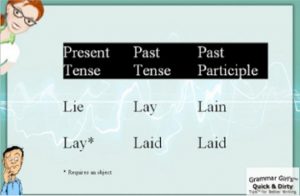‘Sweethearts carve their names on trees, not each other. Does it ever occur to you that you are not leading a normal life?’ (15)
Lois never thought twice about her and Tiny’s relationship. She knows that she loved him, so why would she jeopardize her happiness for everyone else’s? Lois knew what made Tiny happy, and that was tattooing her, so she let him do it. She let him do it until their was no more room for any more tattoos. Through those pieces on Lois, she is able to reimagine every memory that she made with Tiny.
When Tiny was having a heart attack, Lois told him that it was bad luck to die. I don’t think that saying is meant for Tiny; I feel like she was saying it to herself. With that being said, it’s not bad luck for the one dying; it’s bad luck for the loved ones. As far as I can tell, when someone loves another, they feel as if they’ve won the lottery; they got lucky. But when the one that they love dies, it feels as if all of that happiness and joy that the encountered in that relationship is gone.
The tattoos on Lois’ body represent the love that Tiny and her shared. If someone saw them in detail, up close, they would understand. However, not many do.
‘What if you want to get married again? What man will want you when someone else has been scribbling all over you?’ (22)
Her mother doesn’t understand the love that they had. Only a month after Tiny died, her mother started bringing “potential” boys to their lunches, I think hoping that Lois would find a new, “better” love. But Lois knows that she won’t. At the end of the story, she says that she is a love letter. She is etched with all the love lines that were created with her and Tiny’s relationship. She doesn’t need people to understand what the relationship was, as long as she knows what the relationship was and what it made, she can be happy.
While reading this story, I thought a lot about my parents and their relationship. While they are not 31 years apart in age like Lois and Tiny, they share the same kind of love they have. My mom was engaged to another man when my parents met. And every time I ask my mom about when they met, she said that when she looked at my father for the first time, she knew he was the one she was going to spend the rest of her life with. They got married six weeks later on December 31 and they are going to be celebrating their 23rd anniversary this year. And looking at my parents, I can see a lot of Lois and Tiny’s relationship.
 No lie. Let’s get this right.
No lie. Let’s get this right.